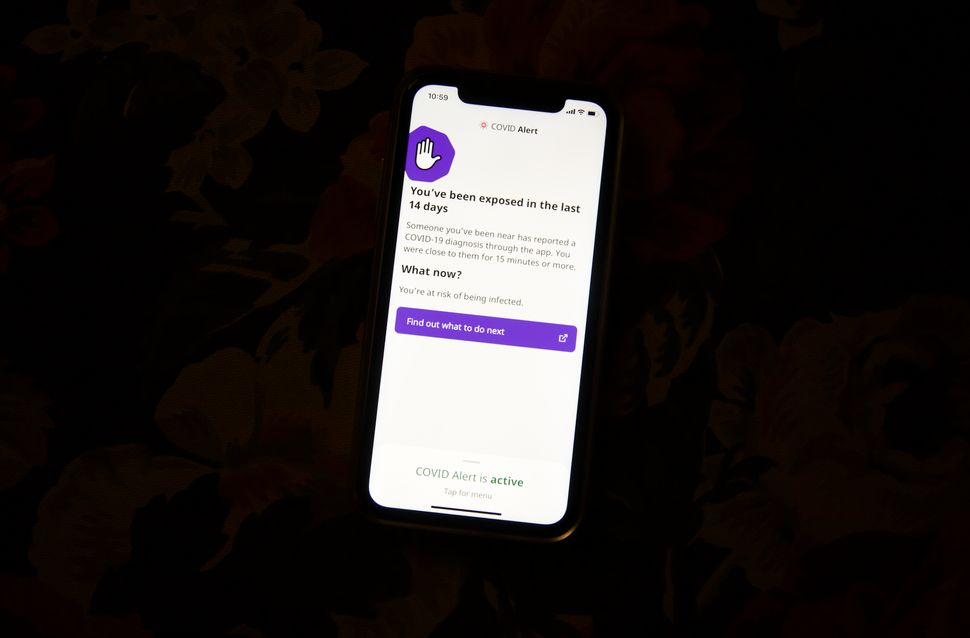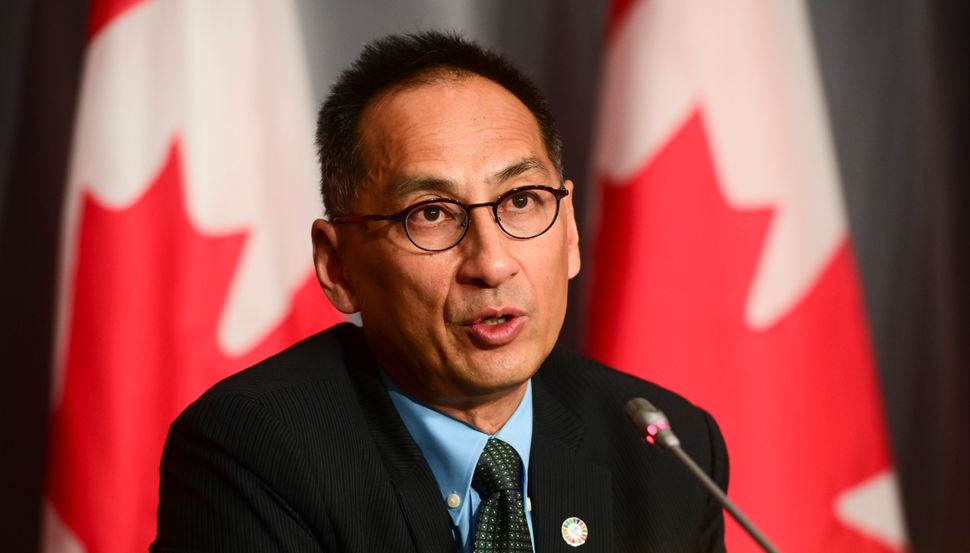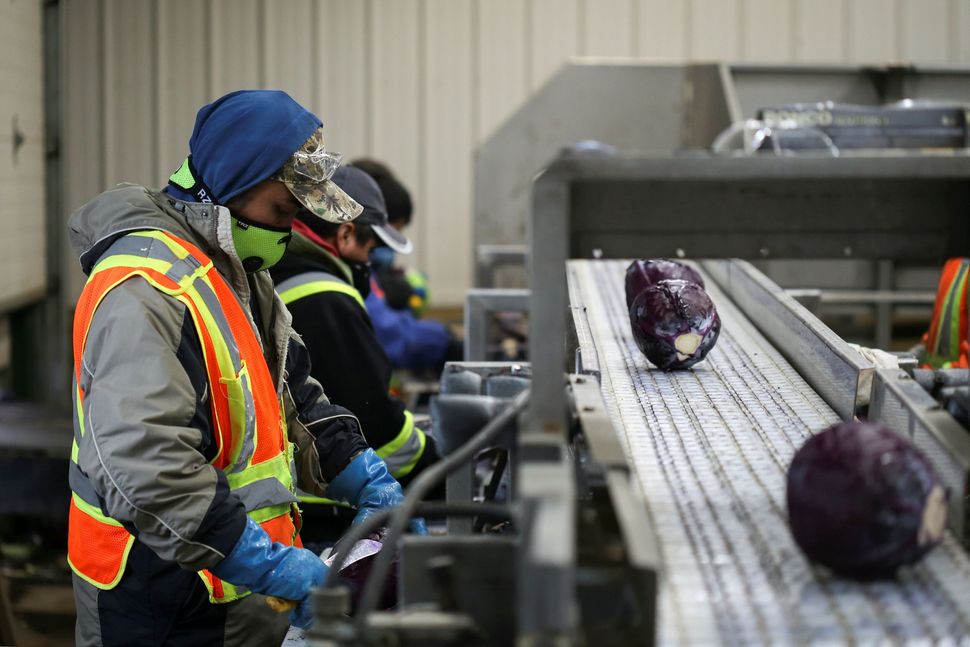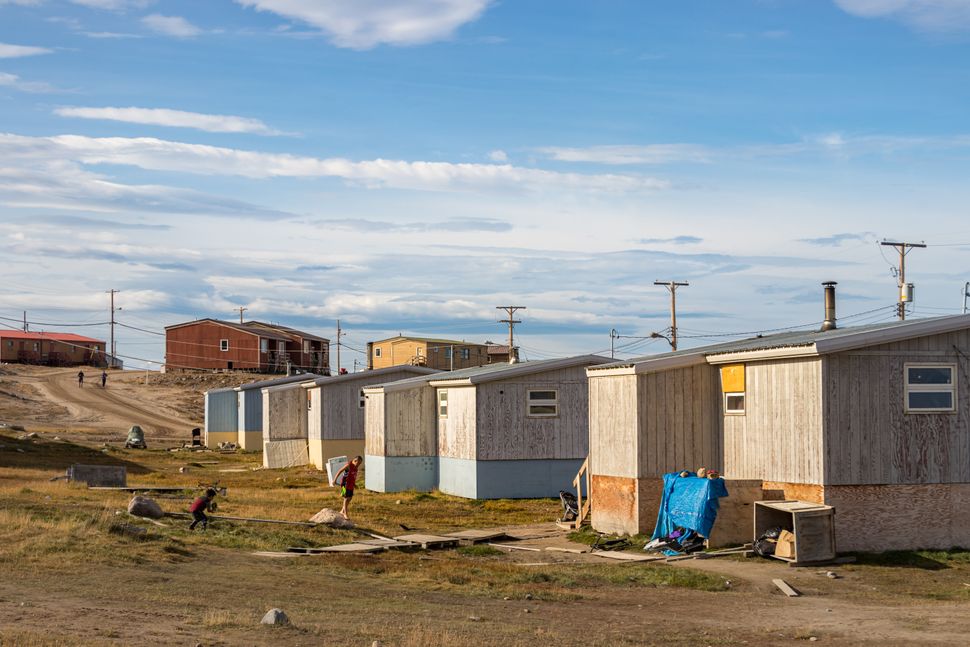
OTTAWA — It’s easy to find an example of structural inequality in Canada: just look at your phone.
The “COVID Alert” app, launched first in Ontario at the end of July, is an exposure notification tool that uses Bluetooth technology to identify potential community transmissions of COVID-19.
Available in English and French, the app satisfies official language requirements that came into law in 1969. Waves of immigration and a growing number of speakers of Cree languages, Ojibway, Oji-Cree, Dene and Inuktitut have since increased ethnic and linguistic diversity. But during a public health pandemic, in a country where four million people do not speak an official language at home, the potentially life-saving app is the latest example of health-related inequity.
Prime Minister Justin Trudeau has asked Canadians repeatedly to download the app — a call to action that has increased in frequency and urgency after the country’s two most populous provinces confirmed the arrival of a second wave of infection.
“It’s free. It protects your privacy, and it’s another way to keep yourself and others safe,” Trudeau said Thursday, adding on Friday that the more people who download the app, “the more we will be able to arrest the spread of COVID-19.”
Ontario Premier Doug Ford was more direct. Downloads of the app should be automatically installed on all government employees’ phones, he said this week. “Everyone should be doing it.”
Watch: Quebec signs onto federal ‘COVID Alert’ app. Story continues below video.
Contact tracing apps are considered effective if 65 to 80 per cent of a population use them. The app has been downloaded 3.1 million times. To put its usage in perspective, Canada is home to 38 million people, which puts the download rate at just over eight per cent.
Officials said 645 people had used the app to report their positive COVID019 results as of Sept. 30. Ontario reported 625 new cases in the province on the same day.
National uptake has been slow, too. Nova Scotia, Prince Edward Island, Quebec, and Manitoba were the latest provinces to commit to the app — just this week. Users in those provinces are expected to have one-time keys available to them in weeks.
But as COVID-19 cases climb past 161,000 nationally, officials confirm there are no concrete plans to expand the exposure notification app into other languages for alternative ways to reach populations with low digital, English and French literacy.
Mandarin, Cantonese, Punjabi, Tagalog, Spanish, Arabic, Italian, and German are the next eight most common languages spoken in Canadian homes after English and French, according to census data.
Additional languages will be based on “user needs,” Marika Nadeau, director general of Health Canada’s COVID-19 task force, told reporters at a technical briefing Thursday. She said there are discussions “looking” at expanding a $10-million advertising campaign to include six additional languages to raise awareness about an app that’s available in only two.
Nadeau suggested that the app could “potentially” be translated into an Indigenous language, when asked by HuffPost Canada what the rationale is for not translating the app into non-official languages during a public health pandemic. She did not specify which one.
“Right now … we’re focusing on onboarding and making use of the application and users entering their one-time keys. So it is currently only available in French and English.”
The app complements contact tracing efforts by local public health authorities and “does not replace other important guidance such as wearing a mask, and maintaining physical distancing,” said Public Health Agency of Canada spokesperson Tammy Jarbeau. “The app will be continually assessed as it is rolled out across the country.”
Last month, Toronto-based not-for-profit research institute ICES published a report concluding that although a quarter of people tested during the initial wave of COVID-19 infections were immigrants, refugees and other newcomers, they have accounted for 43.5 per cent of positive cases.
“Among recent adult immigrants and refugees, fewer years of formal education and lack of English- or French-language ability at the time of immigration is associated with low testing rates but high per cent positivity for COVID-19,” the report read.
***
More attention has been drawn to the app recently because the work of contact tracers has changed dramatically as parts of the country enter a second wave.
Deputy Chief Public Health Officer Howard Njoo told reporters Tuesday just how dire the situation is, explaining that during the spring lockdown, people would tell contact tracers that they had been in contact with five or six people on average.
“Now what’s happening when cases are being detected, the number of contacts has jumped to 20 or 30 plus,” Njoo said, calling it “an important sign that things are not the same as before.”

The “COVID Alert” app is not a substitute for manual contact tracing efforts. It does not record or share a person’s location or personal information. It works by using Bluetooth to exchange codes with other Bluetooth-enabled devices with the app installed.
If two Bluetooth-enabled devices with the app installed are within two metres of each other for at least 15 minutes, the phones remember that connection. Phones receive a notification warning of a potential infection risk only if someone they’ve encountered under those conditions tests positive and voluntarily enters their one-time key into the app. That action alerts all devices the phone has made close-proximity connections within the past 14 days.
When provinces and territories sign on to “COVID Alert,” they commit their regional health authorities to giving one-time keys with every positive test result so people have the option of anonymously reporting their diagnosis inside the app.
But not everyone with a phone can download the exposure notification app in Canada. The app won’t work on phones more than five years old. It works only with newer smartphones with updated iOS or Android operating systems. According to the federal government, that restriction is set by Apple and Google.
Pandemic ‘exaggerates’ pre-existing inequalities: expert
“Folks who don’t speak English, who are racialized, who are working on the front lines, who may not have digital access are being impacted,” said Katie Crocker, chief executive officer of the Affiliation of Multicultural Societies and Service Agencies of B.C. (AMSSA).
“A pandemic exaggerates the inequities that already exist,” Crocker told HuffPost. She isn’t surprised by federal officials’ lukewarm reception to the idea of translating the “COVID Alert” app into additional languages during a public health pandemic. It reflects pre-existing systemic and institutional racism, she said.
“When we prioritize the health and safety of folks who are already in positions of influence and power, we continue to do serious damage to vulnerable communities.”

Crocker leads AMSSA, a Burnaby, B.C.-based association that helps more than 80 organizations across the province deliver multicultural programming, including translation help, language lessons, health services, and settlement support — most of which were provided in-person before the pandemic.
By the end of March, everyone had been forced online, bringing to light “significant” challenges as essential services came to a halt.
“The No. 1 challenge that we see is digital literacy and digital equity,” she said.
The shift to virtual workplaces and services during the pandemic has brought renewed attention to disparities in access to the internet and related technologies and to digital literacy. They are issues on the federal government’s radar.
Trudeau announced Thursday plans to spend $10 billion on infrastructure projects such as green energy and connecting 750,000 homes and small businesses to broadband internet in underserved communities — a longtime goal of his Liberal government.
“The No. 1 challenge that we see is digital literacy and digital equity.”
- Katie Crocker, AMSSA chief executive officer
The pledge is the latest chapter in big-budget spending promises the federal government has laid out as part of its pandemic economic recovery plan.
At the onset of the COVID-19 crisis, the federal and provincial governments announced health-care changes and a bevy of financial aid programs and benefits for businesses and personal incomes at breakneck speed. In an effort to get help to people who needed it quickly, organizations that serve multicultural clients, such as AMSSA, dialled up their translation services. They knew better than to make requests to governments to translate documents through official channels.
“They just move a bit slow,” she said. “It’s not that they’re not doing it, but the languages that they’re choosing to disseminate in and the speed in which these things get taken care of are slow.”
Mumilaaq Qaqqaq knows this to be true. The NDP MP represents Nunavut, a large northern territory with four official languages. English and Inuktitut are the most predominant, followed by Inuinnaqtun and French.
“Access to federal programs and services was already extremely difficult before COVID-19,” she told HuffPost. When emergency programs, including the Canada Emergency Response Benefit (CERB), were announced, the federal government didn’t translate the materials into Inuktitut. The Nunavut government did.
“Being able to have forms accessible in a language that makes sense to you to be able to receive funding that determines whether or not you can pay rent or you can eat that week,” Qaqqaq said. “It’s essential.”

The pandemic has amplified pre-existing systemic barriers faced by her constituents, of whom more than 80 per cent are Inuit, she said. Concerns about meeting basic human needs, such as food, water, and shelter, are still at the top of the list.
“How can we talk about the basics of handwashing when communities are on boil-water advisories every year, for multiple months a year in some cases,” Qaqqaq said. “How can we encourage people to stay home in a two-bedroom when they live with 13 other people?
“If one person contracts COVID in that home, then, bam, you already have 10-plus people in an overcrowded home living in close quarters, which already isn’t healthy — and now there’s COVID-19.”
The past few months, she said, have only made the seriousness of pre-existing inequities even clearer.